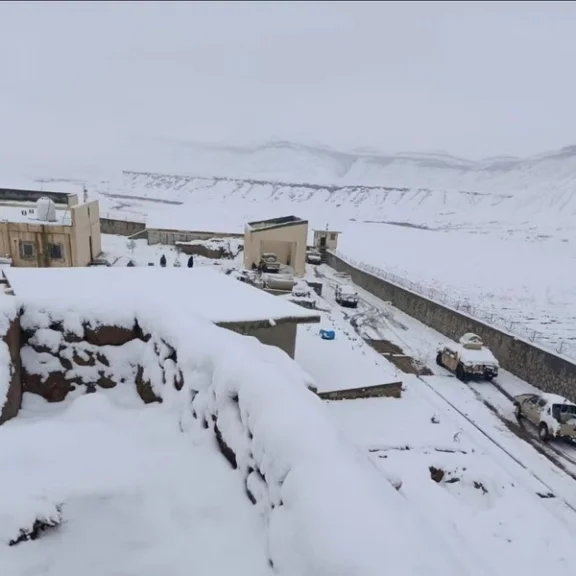On March 11, 2024, India tested a Multiple Independently Targetable Re-entry Vehicle (MIRV) variant of its Agni-V Intercontinental Ballistic Missile (ICBM). Touted as a technological leap forward, to gain a 7500 kg warhead, the move is far more than a simple milestone in missile development. It signals a clear shift in India’s strategic posture, from deterrence to dominance and injects dangerous new instability into an already fragile South Asian security architecture.
This development, along with India’s parallel pursuit of a deep-strike conventional bunker-buster variant of Agni-V, is not just a technical escalation, it is a doctrinal and political pivot with regional and global consequences.
From “Credible Minimum Deterrence” to “Decapitating First Strike”?
India’s strategic posture has apparently revolved around two pillars: Credible Minimum Deterrence (CMD) and the No First Use (NFU) policy. But the integration of MIRV technology, capable of launching multiple warheads at separate targets via a single missile, coupled with the deployment of a conventional deep-strike version of Agni-V armed with a 7.5-tonne warhead capable of penetrating 80–100 meters underground, points toward a shift from defensive deterrence to counterforce-first strike capabilities.
While India’s official nuclear doctrine remains unchanged on paper, these technological developments strongly suggest preparations for scenarios that could include pre-emptive or decapitating strikes, especially in response to perceived threats or during heightened conflict situations. Such capabilities blur the lines between conventional and nuclear war, dangerously lowering the nuclear threshold.
Range and Reach: Regional Implications
The MIRV-equipped Agni-V has an estimated range of 5,000–8,000 km, bringing all major Chinese and Pakistani cities well within its reach. The conventional version, optimized for deep-penetration, is estimated to have a range of 2,000–2,500 km, still sufficient to target Pakistan’s nuclear command and control centers.
In contrast, Pakistan has pursued Full Spectrum Deterrence, a posture designed to respond proportionally to threats across the spectrum of conflict. Pakistan’s MIRV-capable Ababeel missile, tested in 2017 and again in 2023, was developed specifically in response to India’s deployment of a two-layered Ballistic Missile Defence (BMD) system: the AAD and PDV interceptors, covering altitudes from 30 km to 150 km and exceeding 2,000 km in range.
Notably, neither China nor Pakistan maintains a fully operational BMD capable of neutralizing a MIRV threat, calling into question India’s justification for such escalation.
Dual-Use Dilemma and Foreign Handprints
India’s military advancements are not occurring in isolation. Much of the foundational technology behind Agni-V’s MIRV capabilities was derived from its civilian SLV-3 space program. Its collaboration with NASA and access to Synthetic Aperture Radar (SAR) technologies and solid-fuel propulsion have been quietly repurposed for military gain.
This dual-use trajectory is enabled and arguably encouraged by U.S. strategic interests in counterbalancing China. Washington’s recent sanctions on entities allegedly aiding Pakistan’s missile program, while turning a blind eye to India’s expansive tests, only reinforces the growing perception of strategic bias.
Politicizing Missile Tests: An Electoral Pattern
The timing of the Agni-V MIRV test, just weeks ahead of India’s general elections in 2024, mirrors a pattern. In March 2019, the Modi-led BJP government conducted its ASAT (Anti-Satellite) test, days before elections. Both events reflect how military achievements are increasingly wielded for political gain.
Such politicization of strategic assets is a dangerous game. It pressures political parties to escalate regional tensions for domestic applause and normalizes the use of advanced weaponry as election props, while undermining long-term regional peace.
Pakistan’s Response: Defensive and Strategic
Pakistan has taken several critical steps in response: deployment of the Chinese HQ-19 anti-ballistic missile system, a mid-course interceptor that can target incoming high-altitude ballistic threats, hardening and dispersal of strategic assets to improve survivability, further development of the Ababeel missile, incorporating precision, MIRV, and survivability upgrades, strengthening Full Spectrum Deterrence as a response to Indian conventional and nuclear developments.
These responses reflect not just technological competition but a broader strategic necessity. In the absence of dialogue or arms control mechanisms, Pakistan has no choice but to preserve strategic balance.
Urgency of Regional CBMs and Strategic Dialogue
The current trajectory is unsustainable. Without immediate Confidence Building Measures (CBMs), the region risks a catastrophic miscalculation. Potential CBMs include: reviving missile test pre-notification agreements under the 2005 India-Pakistan accord, track 1.5 and Track 2 diplomacy forums on emerging military technologies, a South Asia Strategic Stability Task Force, comprising regional experts and former diplomats, transparency mechanisms on MIRV and BMD developments, modeled after Cold War-era U.S.-Soviet strategic talks.
India must realize that technological superiority does not equal strategic invulnerability. The more opaque its posture becomes, the more volatile the region will get.
Conclusion: A Fork in the Road
India’s Agni-V MIRV and bunker-buster missiles represent more than just technical milestones they are doctrinal shifts that threaten to undo decades of nuclear restraint in South Asia. Pakistan, while responding in kind, continues to call for dialogue and deterrence over domination.
South Asia is at a pivotal moment. One path leads to mutual transparency, balanced deterrence, and regional stability. The other, paved with jingoism and unchecked militarism, leads to an arms race with no off-ramp. Now is the time for restraint, dialogue, and renewed commitment to regional peace—before one test too many sets the entire region on fire.
The views expressed in this article are the author’s own. They do not necessarily reflect the editorial policy of the South Asia Times.







